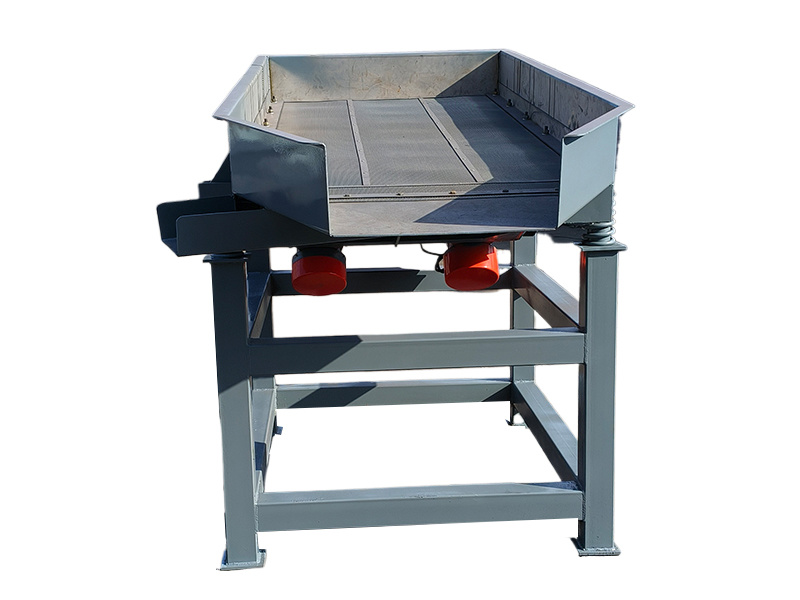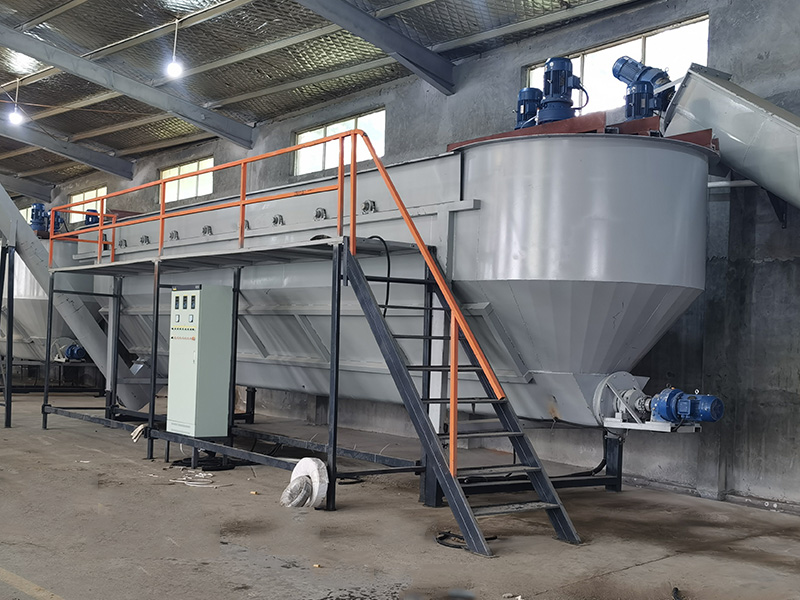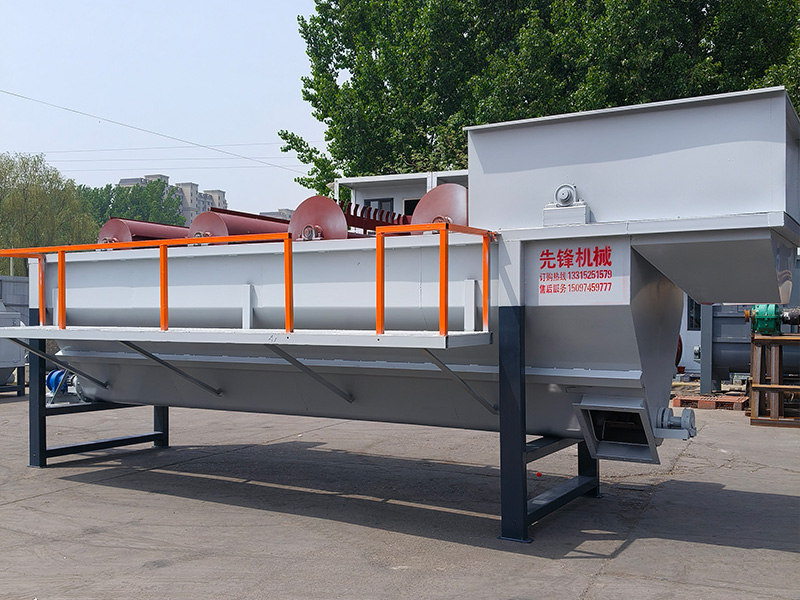Maximizing Manufacturing Efficiency: The Transformative Role of Vibrating Screens
Maximizing Manufacturing Efficiency: The Transformative Role of Vibrating Screens
In the fast-paced world of manufacturing, companies continually seek innovative solutions to enhance productivity and efficiency. One such solution that has gained significant attention is the use of **vibrating screens**. These machines play a crucial role in the **screening and separation** of materials, ensuring t
Aug 11,2025

Maximizing Manufacturing Efficiency: The Transformative Role of Vibrating Screens
In the fast-paced world of manufacturing, companies continually seek innovative solutions to enhance productivity and efficiency. One such solution that has gained significant attention is the use of **vibrating screens**. These machines play a crucial role in the **screening and separation** of materials, ensuring that manufacturing processes run smoothly and effectively. In this article, we will delve into the workings of vibrating screens, their benefits, and how they improve efficiency in various manufacturing industries.
Table of Contents
- Introduction to Vibrating Screens
- How Vibrating Screens Work
- Benefits of Using Vibrating Screens in Manufacturing
- Types of Vibrating Screens in Manufacturing
- Applications of Vibrating Screens in Various Industries
- Optimizing Manufacturing Efficiency with Vibrating Screens
- The Future of Vibrating Screens in Manufacturing
- Conclusion
- FAQs
Introduction to Vibrating Screens
Vibrating screens are essential components in many manufacturing processes. They are designed to separate materials based on size, allowing for the efficient handling of aggregates, minerals, and other substances. By incorporating vibrating screens into manufacturing operations, businesses can improve **product quality**, reduce waste, and enhance overall productivity.
The principle behind vibrating screens is relatively simple. These machines utilize vibrations to move materials across a screening surface, allowing smaller particles to pass through while larger ones are left behind. This separation process is crucial for achieving desired material specifications and ensuring efficient downstream operations.
How Vibrating Screens Work
Understanding how vibrating screens function is key to appreciating their efficiency-enhancing capabilities. The basic mechanism involves a screen deck, which is inclined at an angle and vibrated to create motion. This motion is typically generated by one or more vibrating motors mounted on the screen frame.
As the screen vibrates, materials loaded onto the deck move forward and downward. The size and shape of the screen openings determine which materials pass through. For example, in a mining application, vibrating screens might separate fine minerals from larger rocks, facilitating further processing without the need for manual intervention.
Key Components of Vibrating Screens
Several components contribute to the effective operation of vibrating screens, including:
- **Screen Deck**: The surface on which materials are sorted. It can be made from various materials, such as steel wire or perforated plates, depending on the application.
- **Vibrating Mechanism**: This creates the motion necessary for the screening process. It may consist of electric motors, eccentric shafts, or hydraulic systems.
- **Support Frame**: The structure that holds the screen deck and vibrating mechanism in place, ensuring stability during operation.
- **Feed System**: The part responsible for distributing materials evenly across the screen deck for optimal separation.
Benefits of Using Vibrating Screens in Manufacturing
Incorporating vibrating screens into manufacturing processes offers a wide range of benefits. Some of the most notable advantages include:
1. Enhanced Material Separation
Vibrating screens provide precise separation of materials based on size, leading to improved product quality. By ensuring only materials that meet specific criteria proceed to the next stage, manufacturers can maintain high standards.
2. Increased Efficiency
The ability to process large volumes of material quickly makes vibrating screens an efficient choice for manufacturing environments. Their continuous operation reduces downtime, allowing manufacturers to maximize productivity.
3. Reduced Waste
By accurately separating materials, vibrating screens help minimize waste generation. This not only conserves resources but also reduces disposal costs, contributing to more sustainable manufacturing practices.
4. Versatility
Vibrating screens can be adapted to various materials and industries, making them a versatile solution for manufacturing needs. From mining to agriculture, these machines can handle different substances, enhancing their utility across sectors.
5. Lower Maintenance Costs
Modern vibrating screens are designed for durability and reliability. Their robust construction often results in lower maintenance needs, leading to reduced overall operating costs for manufacturers.
Types of Vibrating Screens in Manufacturing
There are several types of vibrating screens, each designed for specific applications within the manufacturing sector. Understanding the various options available can help businesses select the best fit for their needs.
1. Linear Vibrating Screens
Linear vibrating screens operate with a linear motion, making them ideal for precise material separation. They are commonly used in applications where accurate sizing is crucial, such as in the food processing or chemical industries.
2. Circular Vibrating Screens
Circular vibrating screens utilize a circular motion to move materials across the screen deck. They are effective for bulk material handling and are often employed in mining and aggregate industries.
3. High-Frequency Vibrating Screens
High-frequency vibrating screens are designed to operate at much higher frequencies than traditional screens. This technology enhances the separation of fine particles and is particularly useful in mineral processing applications.
4. Dewatering Screens
Dewatering screens are specialized vibrating screens designed to remove excess moisture from materials. They are commonly used in industries such as coal and mineral processing to prepare materials for further processing or transportation.
5. Grizzly Screens
Grizzly screens are used primarily for coarse material applications. They feature a series of parallel bars that allow larger particles to pass while smaller ones fall through, making them effective in mining and recycling operations.
Applications of Vibrating Screens in Various Industries
Vibrating screens find applications across a multitude of industries, each benefiting from the efficiency and precision these machines offer.
1. Mining and Mineral Processing
In the mining sector, vibrating screens are integral to the sorting and separation of minerals. They help ensure that only the desired materials are processed, enhancing recovery rates and reducing waste.
2. Food Processing
In food manufacturing, vibrating screens are used to separate ingredients and remove impurities. Their ability to maintain hygiene standards while ensuring product quality makes them a vital part of the food processing chain.
3. Recycling
Recycling facilities utilize vibrating screens to sort materials such as plastics, metals, and paper. By efficiently separating recyclable materials from waste, they contribute to more sustainable practices.
4. Construction and Aggregates
In the construction industry, vibrating screens are employed to process aggregate materials, ensuring that only properly sized materials are used in construction projects. This leads to improved structural integrity and performance.
5. Chemical Industry
The chemical industry relies on vibrating screens for separating and classifying various compounds. Their precision helps maintain product consistency and quality in chemical manufacturing processes.
Optimizing Manufacturing Efficiency with Vibrating Screens
To maximize the benefits of vibrating screens in manufacturing, several best practices should be followed:
1. Regular Maintenance
Implementing a routine maintenance schedule ensures that vibrating screens operate at peak efficiency. Regular inspections and timely repairs can prevent costly downtime and maintain optimal productivity.
2. Proper Material Feed
Ensuring an even and consistent material feed improves the effectiveness of vibrating screens. Utilizing feed systems that distribute materials evenly across the screen deck can enhance separation rates.
3. Selecting the Right Screen Type
Choosing the appropriate type of vibrating screen for specific applications is crucial. Each screen type has its unique strengths, and selecting the right one can significantly impact efficiency and productivity.
4. Utilizing Advanced Technology
Incorporating advanced technologies such as automation and control systems can enhance the performance of vibrating screens. These technologies can optimize operations, reduce manual labor, and improve monitoring capabilities.
The Future of Vibrating Screens in Manufacturing
The future of vibrating screens in manufacturing looks promising, with advancements in technology paving the way for more efficient and effective solutions. Innovations in materials, design, and automation will continue to enhance the capabilities of vibrating screens.
As manufacturers seek to improve sustainability and reduce their environmental footprint, vibrating screens will play a crucial role in optimizing resource utilization. Furthermore, the integration of smart technologies and IoT will enable manufacturers to monitor performance in real time, leading to more informed decision-making and improved operational efficiency.
Conclusion
Vibrating screens are indispensable tools in maximizing efficiency across various manufacturing industries. Their ability to enhance material separation, improve productivity, and reduce waste makes them a vital component in modern manufacturing processes. By understanding the different types of vibrating screens and their applications, manufacturers can make informed decisions that will lead to significant improvements in their operations. As technology continues to evolve, embracing innovations will further solidify the role of vibrating screens as essential assets in the quest for operational excellence.
FAQs
1. What are the main functions of vibrating screens in manufacturing?
Vibrating screens primarily separate materials based on size, ensuring that only the appropriate materials continue through the manufacturing process.
2. How can vibrating screens improve product quality?
By accurately separating desired materials from waste, vibrating screens help maintain consistent product quality and reduce contamination.
3. What types of materials can be processed using vibrating screens?
Vibrating screens can process a wide range of materials, including aggregates, minerals, food products, and recycled materials.
4. How often should vibrating screens be maintained?
Regular maintenance is crucial for optimal performance, and a routine inspection schedule should be established, typically on a monthly basis or as per manufacturer recommendations.
5. Are there any advancements in vibrating screen technology?
Yes, recent advancements include the integration of automation, IoT monitoring, and advanced materials that enhance the durability and efficiency of vibrating screens.
TAG:
Contact Us
E-mail :
Phone/WhatsApp:
Address:
Shunping, Baoding City, Hebei Province









